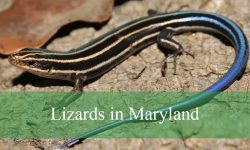Having small flying bugs in your house can be an annoyance and disrupt the peace of your living space. These tiny flying bugs can range from wasps to gnats with each having unique characteristics and habits.
Identification of some small black flying in the house not fruit flies can be a daunting experience. I wrote this article to share the physical features of these small flying insects in kitchen for easy identification:
Different Types of Small Flying Bugs in House
Many people assume that tiny brown flying bugs in house are fruit flies. But some tiny flying bugs might have different colors to reduce the chance of them being fruits. Here is a list of other types of small flying insects in the house:
Wasps
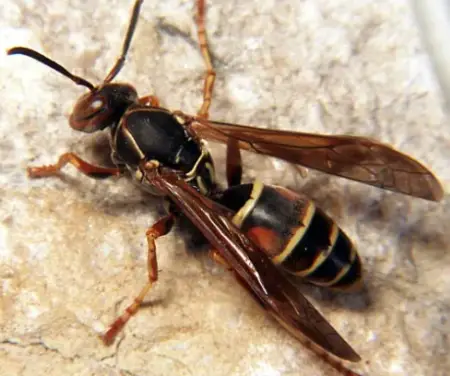
Wasps come in various colors, including yellow, black, and metallic blue. They range in size from 1/2 inch to 1 inch. Wasps build nests in protected areas like eaves, attics, or trees.
They are often identified by their slender bodies, narrow waists, and smooth, shiny appearance. To get rid of wasps, it’s best to contact a professional pest control service.
Biting Midges (Ceratopogonidae)

Biting midges, also known as no-see-ums, are tiny flying insects measuring about 1/8 inch in length. They are usually gray or black in color. Biting midges breed in damp areas such as marshes or stagnant water.
To identify them, look for their small size, hairy wings, and hunched appearance. Reducing breeding sites, using insect repellents, and installing screens on windows and doors can help prevent and control them.
Common Furniture Beetle (Anobium punctatum)
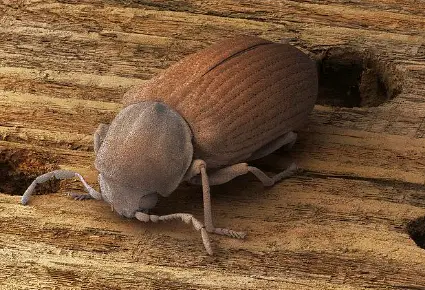
Common furniture beetles are small, oval-shaped insects measuring around 1/8 to 1/4 inch in length. They have brownish-black bodies and are often found in wooden furniture or structures.
These beetles leave behind small exit holes and powdery frass. Look for these signs and inspect wooden items for infestation. Consider contacting a professional pest control service for proper treatment and removal
Carpet Beetles
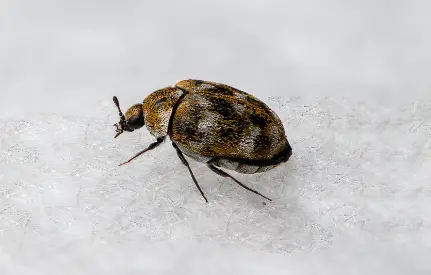
Carpet beetles are small, oval-shaped insects ranging in size from 1/16 to 1/8 inch. They have varied colors, including black, white, and orange patterns.
They are found in carpets, upholstery, and stored clothing. Regular vacuuming, washing and drying infested items, and applying insecticides can help control carpet beetles.
Crane Flies (Tipulidae)
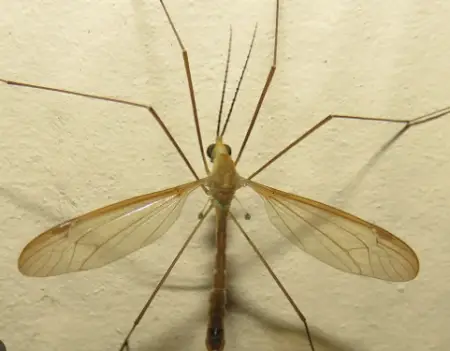
Crane flies resemble large mosquitoes, but they are harmless. They measure approximately 1 to 1.5 inches in length and have long, slender bodies. Crane flies are typically brown or gray in color.
They prefer moist areas like lawns, gardens, or near bodies of water. To control crane flies, maintain proper lawn care practices, such as regular mowing and reducing excess moisture.
Clothes Moths (Tineola bisselliella)
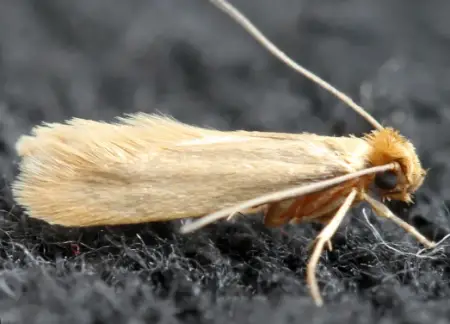
Clothes moths are small insects measuring around 1/4 to 1/2 inch in length. They have golden or buff-colored wings and a straw-colored body. Clothes moths hide in dark, undisturbed areas like closets or drawers.
They are identified by their small size, narrow wings, and slow, erratic flight patterns. To eliminate clothes moths, clean infested items thoroughly, vacuum affected areas, and use moth repellents or insecticides.
Mosquitoes (Culicidae)

Mosquitoes come in various colors, but most have gray or brown bodies. They range in size from 1/8 to 1/4 inch. Mosquitoes breed in standing water, such as ponds or puddles.
To control mosquitoes, eliminate standing water around your property, use mosquito repellents, and install screens on windows and doors. Consider using mosquito traps or professional mosquito control services.
Termites (Isoptera)
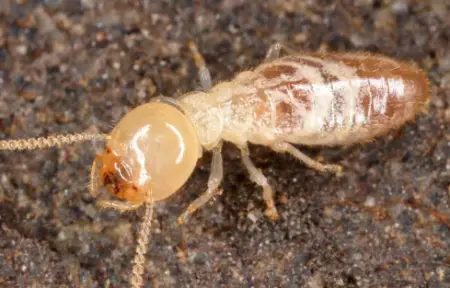
Termites vary in color depending on the species, ranging from pale white to dark brown. They are small insects, typically measuring around 1/4 to 1/2 inch in length.
Termites hide in wooden structures, especially in areas with moisture. Identifying termites can be challenging as they often stay hidden within walls or underground.
Flying Ants in the House
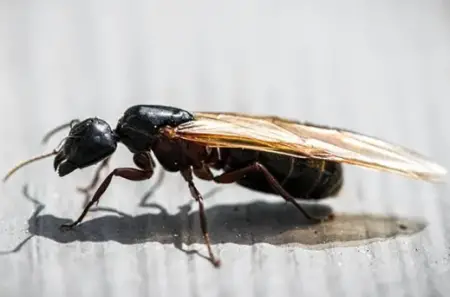
Flying ants are typically black or dark brown in color. They measure about 1/4 to 1/2 inch in length, similar to regular ants. Flying ants may enter homes during swarming season.
They have a distinct appearance with segmented bodies, elbowed antennae, and wings. To distinguish them from termites, note that flying ants have a narrow waists while termites have a straight waist.
To prevent flying ants from entering your house, seal entry points and maintain proper sanitation. If an infestation occurs, consult a pest control professional for effective treatment.
Pantry Moths
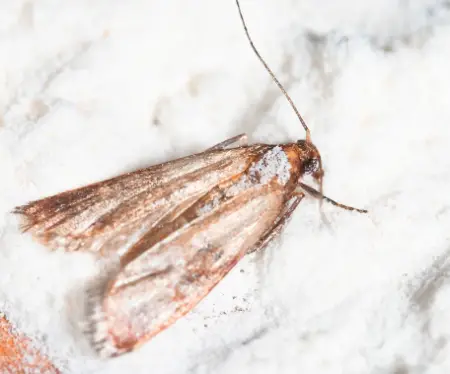
Pantry moths, also known as Indian meal moths, have a distinctive appearance. They measure around 1/2 to 5/8 inch in length. Pantry moths have wings that showcase a combination of gray, copper, and bronze colors.
They infest stored food items such as grains, cereals, or dried fruits. Pantry moths are identified by their small size, elongated bodies, and unique wing patterns.
To eliminate pantry moths, discard infested food, clean pantry shelves thoroughly, and use pheromone traps or insecticides for control.
Fruit Flies (Drosophila spp.)

Fruit flies are small insects, measuring approximately 1/8 inch in length. They have a tan to brownish color with bright red eyes.
Fruit flies are commonly found near decaying fruits, vegetables, or fermenting substances. They are identified by their small size, oval bodies, and distinctive eye color.
To control fruit flies, eliminate potential food sources, clean up spills promptly, cover fruits and vegetables, and use vinegar traps or commercial fruit fly traps.
Phorid Fly (Phoridae spp.)
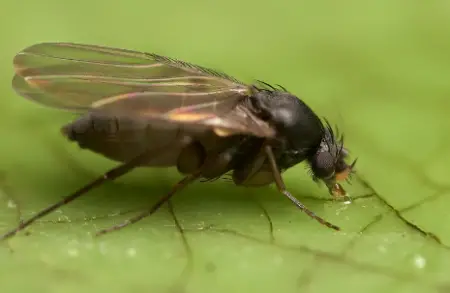
Phorid flies are tiny flies, usually measuring about 1/8 inch in length. They have a humpbacked appearance and are usually black or dark brown in color.
Phorid flies are attracted to decaying organic matter, sewage, or moist areas. They are identified by their small size, hunched thorax, and erratic movement.
To get rid of phorid flies, eliminate their breeding sites by ensuring proper sanitation, fixing plumbing leaks, and using insecticides as needed.
Whitefly
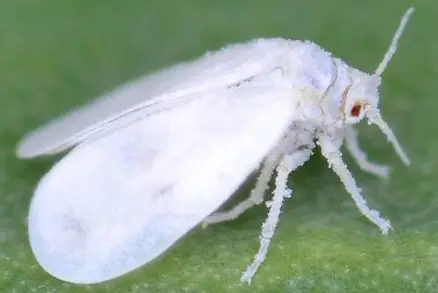
Whiteflies are small, winged insects measuring around 1/16 to 1/8 inch in length. They have a white or pale yellow color and a powdery appearance when disturbed.
Whiteflies typically infest plants, including indoor houseplants and greenhouse crops. They are identified by their small size, white wings, and tendency to fly up in a cloud when disturbed.
To control whiteflies, use insecticidal soaps, and sticky traps, and introduce natural predators such as ladybugs or lacewings.
Blowfly (Calliphoridae spp.)
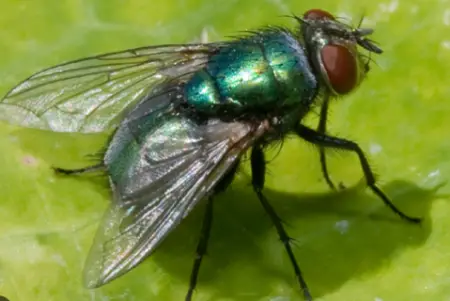
Blowflies are medium-sized flies, ranging from 1/4 to 1/2 inch in length. They have a metallic blue or greenish color. Blowflies are attracted to decaying organic matter, carcasses, or garbage.
They are identified by their medium size, metallic appearance, and buzzing flight. To prevent blowflies, dispose of trash properly, clean up animal waste promptly, and use fly traps or insecticides if necessary.
Drain Fly (Psychodidae spp.)

Drain flies, also known as moth flies, are small insects measuring around 1/8 inch in length. They have a hairy appearance and are usually gray or dark brown in color.
Drain flies breed in moist, organic matter like drains, sewage, or decaying plant material. They are identified by their small size, fuzzy bodies, and fluttery flight pattern.
To control drain flies, clean and sanitize drains, fix any leaks, and use drain cleaners or biological treatments to eliminate breeding sites.
Cluster Fly (Pollenia rudis)
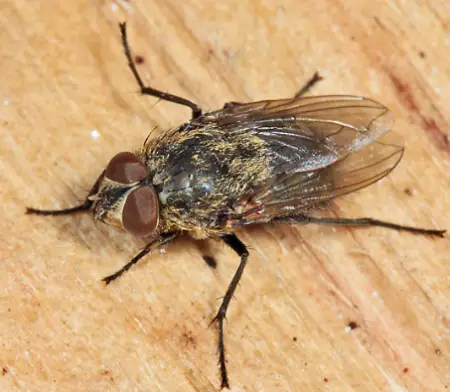
Cluster flies are medium-sized flies, measuring around 3/8 to 1/2 inch in length. They have a dark gray or dull black color with golden hairs on their thorax.
Cluster flies seek shelter indoors during the cooler months, often congregating in large numbers in attics or wall voids. They are identified by their sluggish flight and tendency to cluster together.
To prevent cluster flies, seal potential entry points, use window screens, and consider professional pest control methods for long-term control.
Flesh Flies (Sarcophagidae spp.)
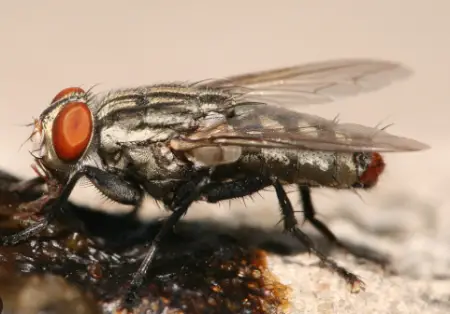
Flesh flies are medium-sized flies, ranging from 1/4 to 1/2 inch in length. They have a gray or black body with three dark stripes on their thorax.
Flesh flies are attracted to decaying organic matter, such as carcasses or garbage. They are identified by their robust appearance and habit of depositing live maggots.
To prevent flesh flies in your house, maintain proper sanitation, dispose of garbage regularly, and use fly traps or insecticides if necessary.
Housefly (Musca domestica)
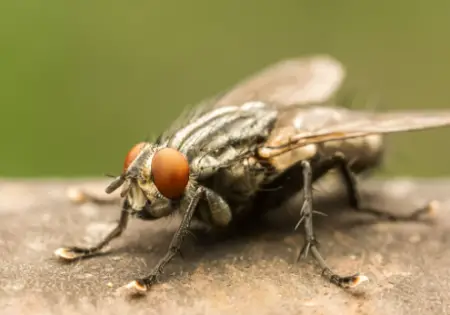
Houseflies are medium-sized flies, typically measuring around 1/4 to 3/8 inch in length. They have a gray color with four dark stripes on their thorax.
Houseflies are commonly found near human habitations, feeding on organic waste and garbage. They are identified by their buzzing flight and habit of landing on food or surfaces.
To control houseflies, practice good sanitation, seal entry points, use fly screens, and employ fly traps or insecticides if needed.
Gnats
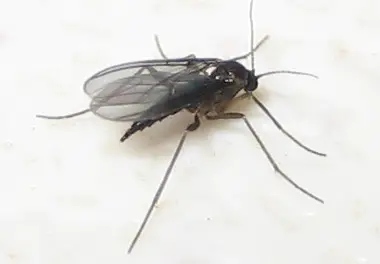
Gnats are small flying insects that come in various species and sizes. They can range from 1/16 to 1/8 inch in length. Gnats can be black, gray, or even transparent in color.
They are commonly found near moist areas, such as decaying organic matter, damp soil, or overwatered plants. Gnats are identified by their small size, delicate appearance, and habit of swarming around in groups.
To prevent gnats in your house, eliminate standing water, allow the soil to dry between watering, use yellow sticky traps, and consider natural predators like beneficial nematodes or predatory mites.
Final Thoughts From Experts
There are different types of tiny flying bugs in the world with unique characteristics and behaviors. Each species can be a nuisance to homeowners since it can be challenging to eliminate and control them. Understanding the characteristics and habits of these tiny flying bugs can help during the identification and implementation of preventative measures.
Prevention is key when it comes to dealing with small flying bugs. Regular cleaning, maintaining proper sanitation, eliminating breeding sites, and sealing entry points are crucial steps in minimizing the chances of infestations. By reducing their access to food, water, and shelter, we can significantly reduce the attractiveness of our homes to these unwanted visitors.
But there may be instances where professional assistance is required to tackle persistent or severe infestations. Pest control experts have the knowledge, experience, and tools to handle these situations effectively. They can provide tailored solutions, treatments, and advice to address specific bug problems in our homes.
It is worth noting that some of these small flying bugs, such as bees and butterflies, play important roles in the ecosystem as pollinators. It is essential to differentiate between harmful pests and beneficial insects when implementing control measures.
People Who Read This Also Read:





